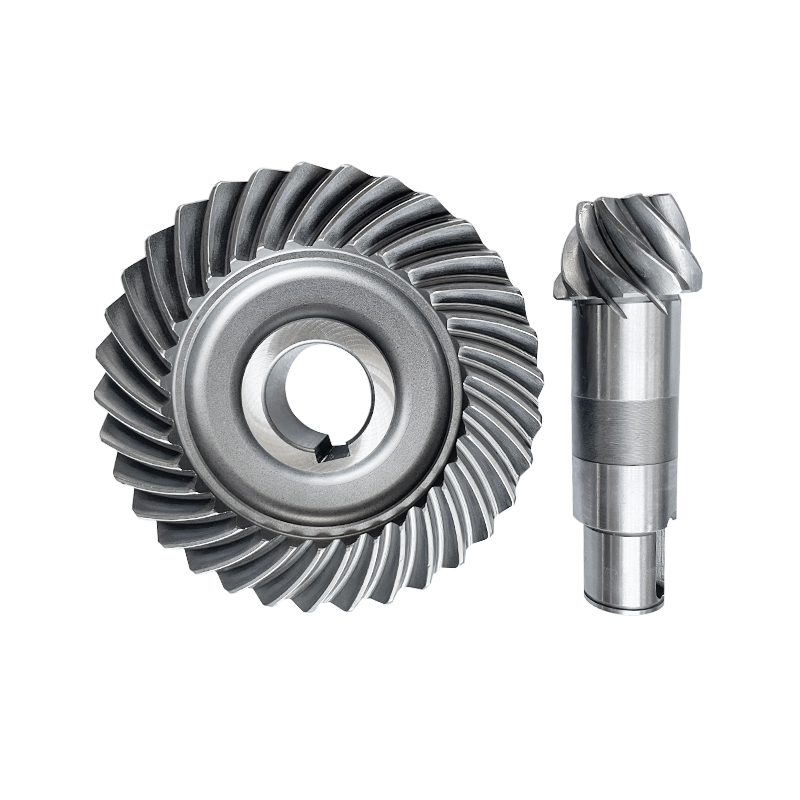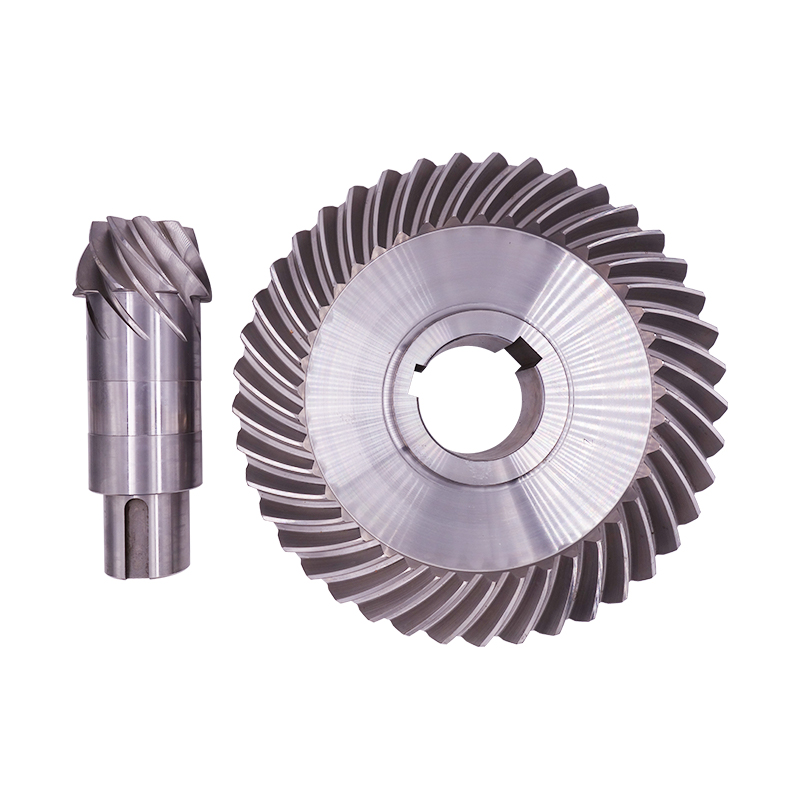Features of lapped bevel gear teeth
Due to the shorter gearing times, lapped gearings in mass production are mostly manufactured in a continuous process (face hobbing). These gearings are characterized by a constant tooth depth from the toe to the heel and an epicycloid shaped lengthwise tooth curve. This results in a decreasing space width from the heel to the toe.
During bevel gear lapping, the pinion undergoes a greater geometric change than the gear, since the pinion experiences more meshing per tooth due to the smaller number of teeth. Material removal during lapping results in a reduction of lengthwise and profile crowning primarily on the pinion and to an associated reduction of the rotational error. As a result, lapped gearings have a smoother tooth mesh. The frequency spectrum of the single flank test is characterized by comparatively low amplitudes in the harmonic of the tooth mesh frequency, accompanied by relatively high amplitudes in the sidebands (noise).
Indexing errors in lapping are reduced only slightly, and the roughness of the tooth flanks is greater than that of ground gearings. One characteristic of lapped gearings is that each tooth has a different geometry, owing to the individual hardening distortions of each tooth.
Features of ground bevel gear teeth
In the automotive industry, ground bevel gears are designed as duplex gearings. A constant space width and an increasing tooth depth from the toe to the heel are geometric features of this gearing. The tooth root radius is constant from the toe to the heel and can be maximized due to the constant bottom land width. Combined with the duplex taper, this results in an comparable higher tooth root strength capability. The uniquely identifiable harmonics in the tooth mesh frequency, accompanied by barely visible sidebands, are significant attributes. For gear cutting in the single indexing method (face milling), Twin Blades are available. The resulting high number of active cut-ting edges increases the productivity of the method to an extremely high level, com-parable to that of continuously cut bevel gears. Geometrically, bevel gear grinding is an exactly described process, which allows the design engineer to precisely define the final geometry. To design the Ease Off, geo-metric and kinematic degrees of freedom are available to optimize the running behavior and load capacity of the gearing. Data generated in this way are the basis for the use of the quality closed loop, which in turn is the prerequisite for producing the precise nominal geometry.
The geometric precision of ground gearings leads to a small variance between the tooth geometry of individual toot flanks. The indexing quality of the gearing can be significantly improved by bevel gear grinding.
Post time: Sep-19-2023






